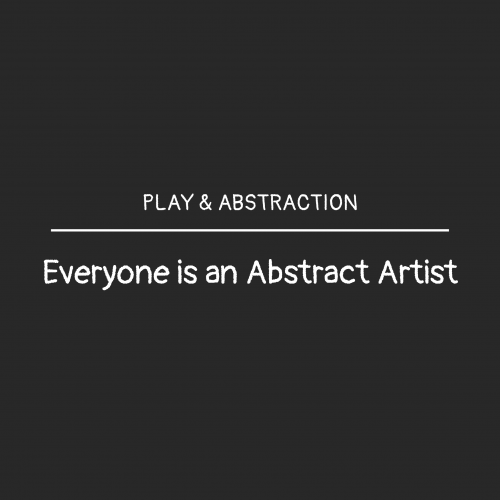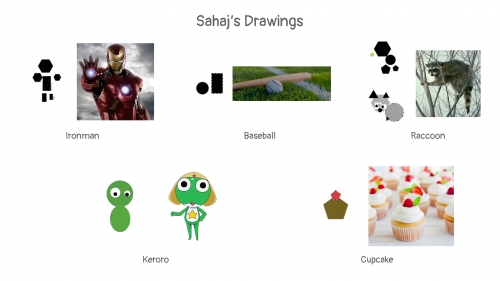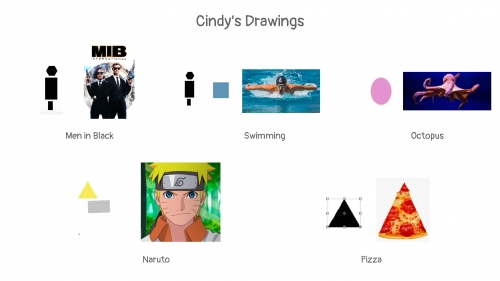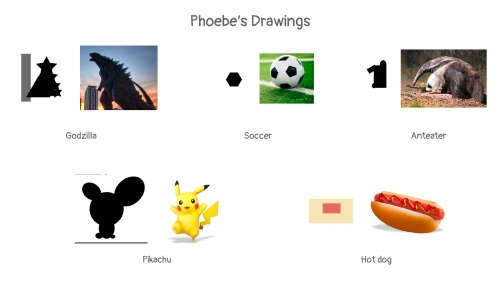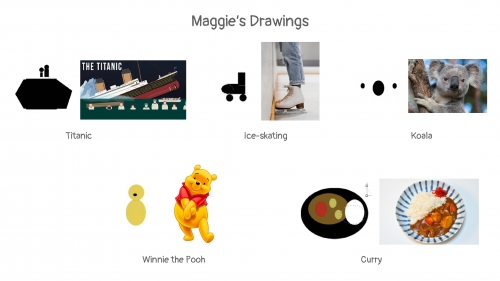Theme
Play and Abstraction
Context
Definition of abstraction
https://www.youtube.com/watch?v=_OVWjMkGsNY
When I looked for inspirations, I looked into the definition of “abstraction”. Some of the sources stated “abstraction” as re-presenting the observed objects that have already been presented (Pamela, 2003). Some defined it as “removing specificity to emphasize commonality”. Both of these inspired me to create a game where players need to re-present something by putting the focus on the “commonality”.
The concept is a little bit like the game called Pictionary where players are limited by their drawing abilities and the others are going to guess as well. Yet, for those with a certain level of drawing abilities, the game may be easier for them. I intended to “normalize” that by asking all the players to use the shapes that I provided.
This project sits in the field of social play where one player is conveying something while the other players are interpreting that and making some guesses. Also, it involves symbolic play where players need to make use of objects, actions or ideas to represent other objects, actions, or ideas.
Method
The shapes were created in the Adobe Illustrator and coloured in black. The instructions of using the shapes were listed in the file. The file was sent to the playtesters. We played the game in Teams and screen recorded it. The gameplay process was edited in Premiere Pro.
Response
Some topics were brainstormed which I thought were not too easy to be guessed. The playtesters were gathered after the class of Playable City and the topics were sent to them through private message. Instructions of the game:
-
Download the Adobe illustrator file
-
Everyone has FIVE topics to let others guess
-
One player share his/her screen, the others are going to guess
-
Screen-sharer picks one of the topics and tells the others which scope the topic is sitting in
-
Express one topic in each round using the shapes provided in the .ai file
-
The screen sharer & the one making a correct guess both gain one mark for each correct guess
The rules to use the shapes:
-
You can only use the shapes here, no new shapes.
-
You cannot resize the shapes
-
Each size of the shapes can only be used once
-
You can change the colour of the shapes
-
You can rotate the shapes
The game is designed in this way because the sizes and the shapes sort of limited the players on how to convey the topic and thus making them expressing in an abstract way (removing the specificity). Other players need to make guesses to give the correct answers by focusing on the commonality between something they know and the thing that the screen-sharer is expressing. The players are forced to experience “abstraction” in the gameplay.
Reflection
The players really found it not easy to express the topic and let the others guess easily. Some of the topics took quite a long time for them to get the right answer. Therefore, the game is quite successful in forcing the players to experience “abstraction”. In addition, the feedback from the players was positive that they found it fun to play the game.
Unfortunately, not all the players have installed Adobe Illustrator on their computer and faced some difficulties when manipulating the shapes and colouring them. It might be more convenient for the players to play if the game is coded with Unity but it’s not possible in the given time strain. As the feedback was quite positive, I may try to develop it during the semester break to make it a “quarantine-friendly” game where players can play together online at home.
In terms of the topics, the scope “anime” was a little bit tricky for some of the players because they haven’t watched it. For sports, some sports with balls were picked to see if they lead to confusion when players guess because there are quite a lot of sports with balls. On the other hand, uncommon animals were picked because people may not think of them immediately, like dogs and cats, when thinking about animals. In conclusion, I think it is quite successful to pick topics with these criteria. The discovery would be helpful when I work on the further development of the game in the semester break.
References
Pamela. Turner. “Content and Meaning in Abstract Animation” Kinetic Imaging Publications and Presentation (2003).
Abstract Strategy Games: The Definitive Guide (2020 Edition)
https://www.nickbentley.games/abstract-strategy-games-online-guide/
Special thanks to the playtesters:
Sahaj Garg
Cindy Wang
Phoebe Ho
Maggie Chang
About This Work
By Margaret Wong
Email Margaret Wong
Published On: 19/05/2020
